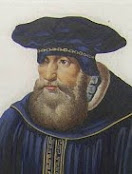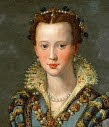Natalia Ginzburg - writer and politician
Sicilian raised in Turin became one of Italy’s great postwar novelists
The writer and politician Natalia Ginzburg was born on July 14, 1916 in the Sicilian capital, Palermo. The author of 11 novels and short story collections, as well as numerous essays, Ginzburg came to be regarded as one of Italy’s great postwar writers, alongside Primo Levi, Carlo Levi, Alberto Moravia, Cesare Pavese, Elsa Morante and Giorgio Bassani among others. Her most famous works include Tutti i nostri ieri - All Our Yesterdays - published in 1952, Lessico famigliare - Family Sayings - published in 1963, and La famiglia Manzoni - The Manzoni Family - published in 1983. She was notable for writing about family relationships, politics during and after the Fascist years and World War II, and philosophy. Ginzburg, who was married to a prominent figure in the Italian resistance movement in World War Two, was an active anti-Fascist. Read more…
_______________________________________
Palmiro Togliatti – politician
Communist leader gunned down near Italian parliament
The leader of the Italian Communist Party, Palmiro Togliatti, was shot three times on July 14, 1948 near Palazzo Montecitorio in Rome. Togliatti was seriously wounded and for several days it was not certain that he would survive, causing a political crisis in Italy. Three months before the shooting, Togliatti had led the Communists in the first democratic election in Italy after the Second World War, which would elect the first Republican parliament. He lost to the Christian Democrats after a confrontational campaign in which the United States played a big part, viewing Togliatti as a Cold War enemy. On July 14, Togliatti was shot three times near the Parliament building. It was described as an assassination attempt, the perpetrator of which was named as Antonio Pallante, an anti-Communist student with mental health problems. Read more…
________________________________________
Collapse of St Mark’s Campanile
Dramatic fall of instantly recognisable symbol of Venice
The bell tower (Campanile) in St Mark’s Square in Venice collapsed on July 14, 1902. No one was killed but the Biblioteca Marciana nearby was partially damaged. A crack had appeared in one of the walls of the bell tower a few days before and at approximately 9.45 am on Monday, 14 July, the entire structure collapsed into a heap of rubble. Venetians regarded the event as a tragedy. The bell tower, just short of 100 metres tall, had stood for around 1,000 years and was seen as symbolic of the city. Built on foundations of wood and mud, however, there was always the danger it would become unstable over time. On the evening of the day of the collapse, the Venice authorities approved funding for the reconstruction of the Campanile in the same place in the piazza, to be built in the way that it looked after 16th century improvements to the ninth century design. Read more…
Cardinal Jules Mazarin - ruler of France
Jesuit-educated Italian served two French kings
Jules Mazarin, who was to become the de facto ruler of France for nearly 20 years, was born Giulio Raimondo Mazzarino on July 14, 1602 in Pescina, a small town in the province of L’Aquila in the Abruzzo region. He served as the chief minister to the Kings of France, Louis XIII and Louis XIV, from 1642 until his death in 1661. Mazzarino’s parents were residents of Rome but would spend the summers in Pescina to escape the heat. His father, Pietro Mazzarino, had moved to Rome from Sicily to become a chamberlain in the family of Filippo I Colonna, the Grand Constable of Naples. His mother was Filippo I Colonna’s goddaughter. Influenced by the Colonna family, the couple sent Mazzarino to the Jesuit College in Rome when he was seven. He excelled in his studies and gave a public lecture at the age of 16, explaining Halley’s comet, which had appeared that year. Read more…
______________________________________
Camillus de Lellis - saint
Reformed gambler who became devoted to caring for sick
Camillo de Lellis, a gambler and streetfighter who reformed his life and eventually set up a religious order to tend the wounds of soldiers on the battlefield, died on July 14, 1614 in Rome. He was made Saint Camillus de Lellis by Pope Benedict XIV in 1746. Nowadays he is recognised as the patron saint of the sick, hospitals, nurses and physicians. Sometimes his assistance is also invoked by individuals with gambling problems. The Order of Clerks Regular, Ministers of the Infirm (M.I), better known as the Camillians, is seen as the original Red Cross on account of an incident during the Battle of Canizza in 1601, when a tent containing all of the Camillians’ equipment and supplies was destroyed in a fire. Among the ashes, the red cross from the back of a religious habit belonging to one of the Camillians was found to have survived. Read more…
______________________________________
Book of the Day: All Our Yesterdays, by Natalia Ginzburg. Introduction by Sally Rooney
Anna, a 16-year-old schoolgirl in a small town in northern Italy, finds herself pregnant after a brief romance. To save her reputation, she marries an eccentric older family friend, Cenzo Rena, and they move to his village in the south. Their relationship is touched by tragedy and grace as the events of their life in the countryside run parallel to the war and the encroaching threat of fascism – and in their wake, a society dealing with anxiety and grief. At the heart of All Our Yesterdays is a concern with experiences that both deepen and deaden existence: adultery and air raids, neighbourhood quarrels and bombings. With her signature clear-eyed wit, Ginzburg asks how we can act with integrity when faced with catastrophe, and how we can love well.Natalia Ginzburg’s work included novels, short stories, and essays that never shied away from the traumas of history, whether writing about the Turin of her childhood, the Abruzzi countryside, or contemporary Rome. Most of her works were translated into English and published in the United Kingdom and United States. Sally Rooney is a best-selling Irish novelist.
.jpg)





.jpg)





.jpg)








.jpg)
